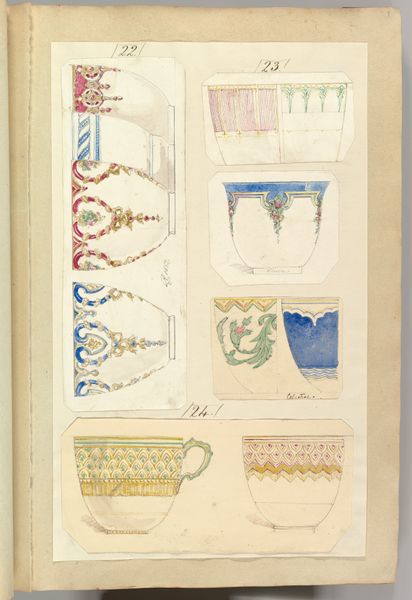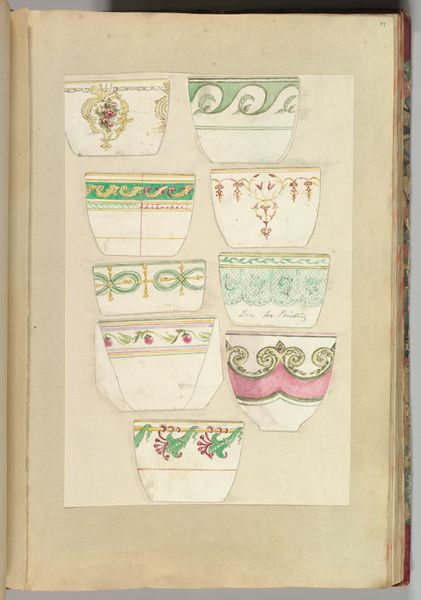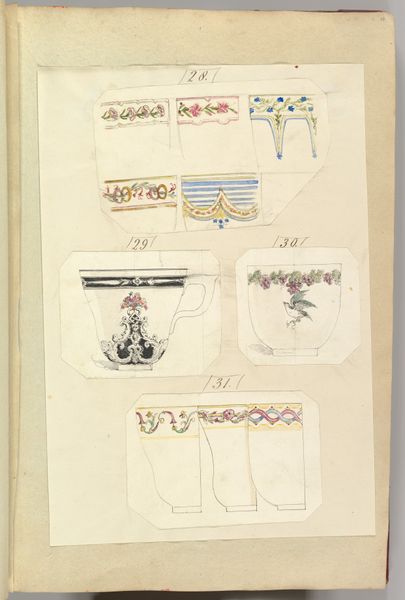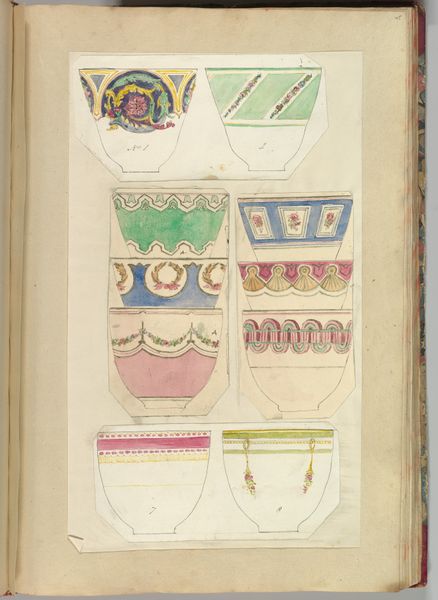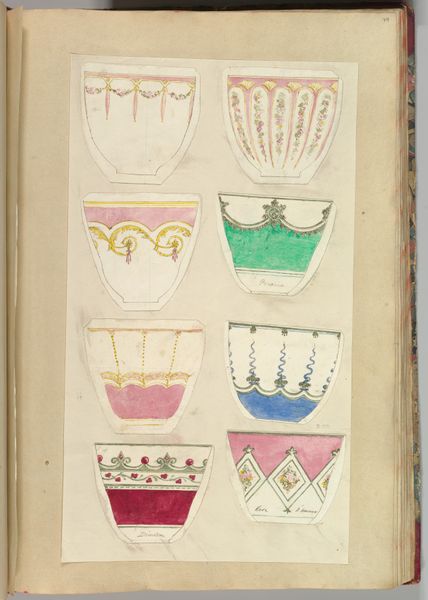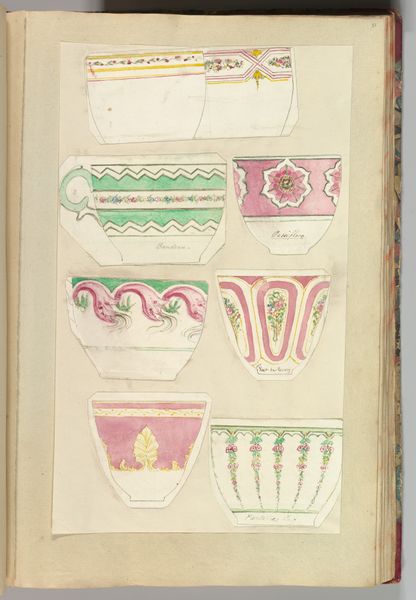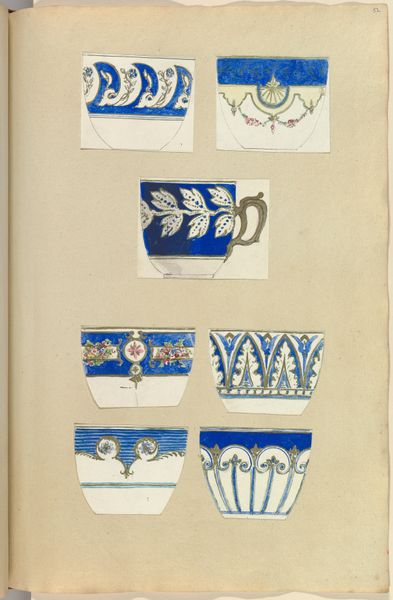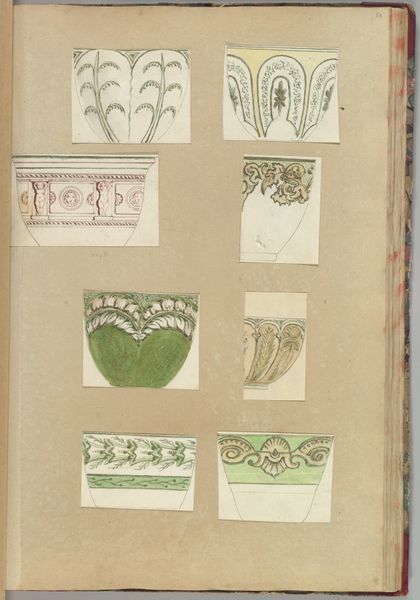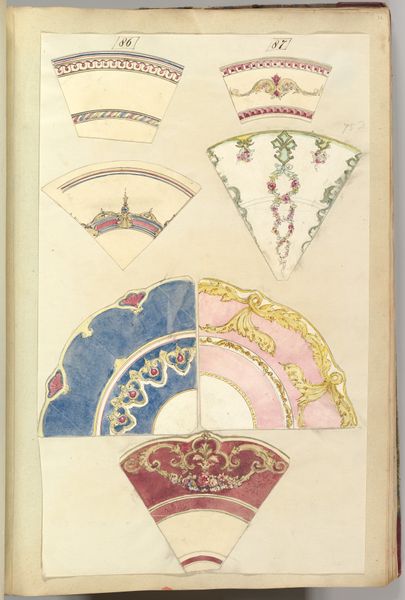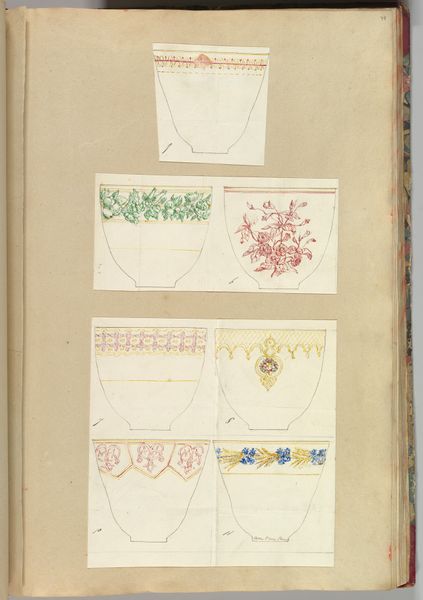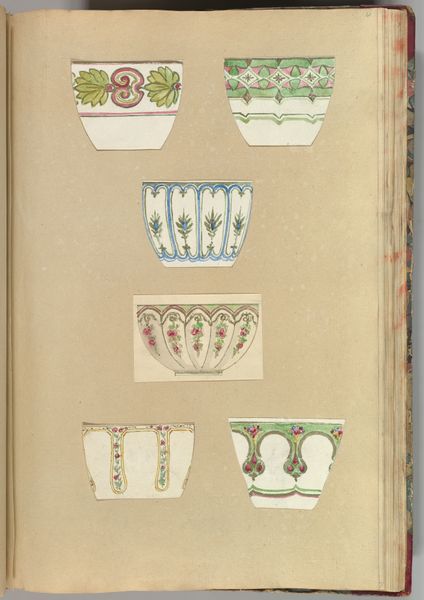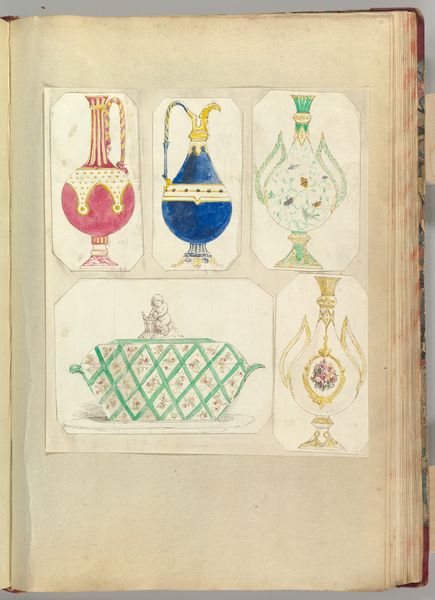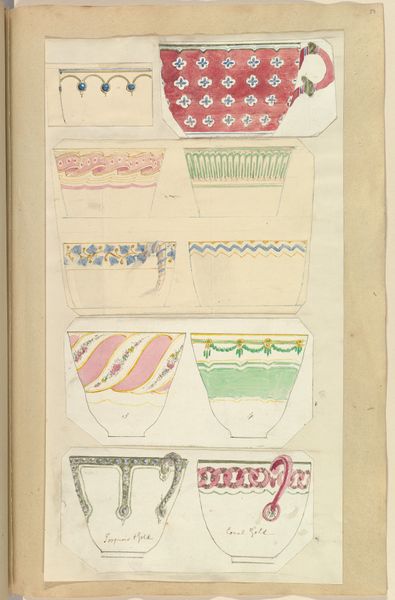
drawing, coloured-pencil, print, paper
#
drawing
#
coloured-pencil
# print
#
paper
#
coloured pencil
#
romanticism
#
decorative-art
Dimensions: sheet: 16 3/4 x 11 7/16 in. (42.5 x 29 cm)
Copyright: Public Domain
Curator: Immediately striking is the rather subdued elegance, almost quiet luxury, radiating from this sheet. Editor: Yes, it possesses a delicate refinement. What are we looking at exactly? Curator: This is "Seven Designs for Decorated Cups," created by Alfred Henry Forrester between 1845 and 1855. He used drawing, coloured pencil, print and paper as a medium to propose what appear to be prototypes for ornate decorative arts. You can currently find this work at the Metropolitan Museum of Art. Editor: Forrester clearly had an inclination toward patterns of prestige; observe the crowns, ribbons, and ornate emblems displayed in deep-blue, gold and blush shades! Considering the social implications surrounding tea culture during the Victorian era, particularly its association with status and refinement, Forrester's work speaks to how coveted these visual indicators of aristocracy must have been. Curator: I concur; it certainly is more than just attractive illustration. There seems to be this striving to visualise aspirational imagery with social meanings inherent to these intricate emblems. What impact did items like this have on shaping identities of the period? And how can these visual motifs potentially exclude people unable to access such levels of consumerism and symbolic participation? Editor: It's like viewing an artifact which subtly broadcasts the cultural norms, biases and socioeconomic dynamics through domestic product design. Each cup almost serves to perform unspoken standards for belonging and decorum. Curator: Exactly! So by examining seemingly everyday designs such as this, we unpack broader social discourses governing identity and inclusion back in the 19th century—and probably far beyond. Editor: This has completely re-contextualized my viewing. Originally, I interpreted just "nice cups," but it demonstrates that even humble drawings encapsulate far deeper conversations if given careful consideration within historic viewpoints regarding power, identity, as well as social signals through things! Curator: And it reinforces, once more, how "visual grammar" transcends timelines; how society continues communicating hierarchies by aesthetic symbolism centuries afterwards!
Comments
No comments
Be the first to comment and join the conversation on the ultimate creative platform.
